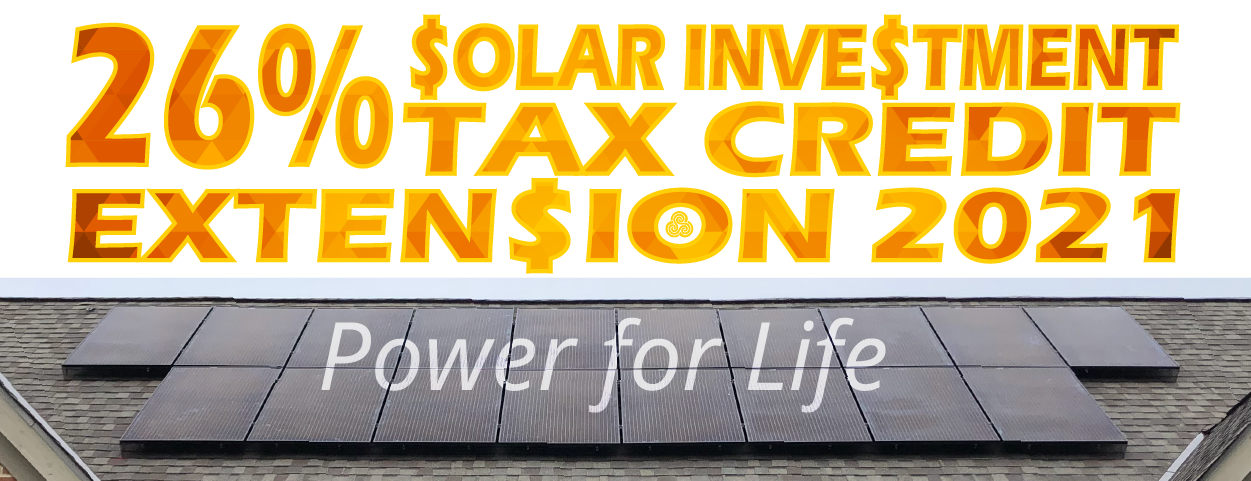By: Geoff Greenfield, Third Sun President, and co-founder
As the dust settles around the election many are asking: “What does the election mean for clean energy in general?” and “How will a Biden Presidency impact my own plans for going solar?”
As divisive as our recent politics have become, clean energy and concern about the climate remains popular with Americans on both sides of the aisles. America is a technology focused society and many, including Wall Street, are very optimistic about the future of clean energy. While Biden campaigned heavily on climate and his $1.7 Trillion “Biden Plan”, he is probably entering office with a divided congress, so our focus here is on what is likely and achievable in this scenario.
With control of both houses of Congress Biden and the Democrats will be able to enact more aggressive legislation. In this case, with a VP vote as the tiebreaker in the Senate, the threat of a filibuster is very real. This threat, combined with Biden’s pledge (and track record) of bipartisanship, we still expect a much more moderate agenda. Compromise will dilute the full strength “Biden Plan” published during the campaign. Given the speed of the legislative process, rulemaking, and court appeals, we expect that any version of a “Biden Plan Light” would not impact the solar marketplace until 2023 at the earliest.
Solar as part of COVID-19 Relief
Congress is currently working on a bill focused on the COVID-19 crisis and jumpstarting the economy. While there will be name-calling and horse-trading, most political observers and economists are expecting fast bipartisan compromise . Part of that horse-trading will involve clean energy policy. We expect that a lot of the money invested in job creation (with a focus on major infrastructure projects) will include a clean energy focus. Take a look back to the Obama-Biden recovery act after the 2008 housing crisis to see the history we expect to be repeated: support for weatherization, energy upgrades, efficient transportation, and solar on the rooftops of public buildings.
We expect more of this: solar on the roofs of public buildings, investments in batteries for resiliency at public shelter sites and police and fire stations, as well as a huge investment in EV charging stations at locations ranging from libraries to highway rest stops. Republican cooperation may be achieved with giveaways to utilities in the form of deferred grid infrastructure, nuclear, controversial carbon capture schemes, and “clean coal”.
- 12/28/2020 Update: Read more on the passage of the Covid-19 relief package + tax credit extensions here.
An Extension of the Solar Investment Tax Credit
One hopeful area of bipartisan compromise may be extending (or expanding) the popular tax credit that supports solar. The solar Investment Tax Credit, or ITC, has gone through several stages of expiration and resurrection after its original passage in 2005 under the Bush administration. The ITC has long been considered “the lifeblood” solar incentive in the United States. According to the Solar Energy Industries Association, the residential and commercial solar Investment Tax Credit has helped the U.S. solar industry grow by more than 10,000% since it was implemented. The solar tax credit was originally intended to expire in 2007 but has seen multiple extensions leading up to our current situation: a stepped down “sunset” from 2020 to 2022.
Under the current timetable, the credit declined to 26% for systems placed in service in 2020 and drops to 22% for 2021 and then in 2022 drops to zero for homeowners and levels out at 10% for commercial entities. One of the primary hopes of the solar industry at large is to see an extension of the tax credit. Tax credits are often popular with Republicans, and in fact, in 2019 Senator Mitch McConnell approved a tax bill that included an extension of the solar and EV tax credits only to have them eliminated by Trump. While I don’t think there are Las Vegas oddsmakers for such things I’m going to go out on a limb and predict that there is a greater than 50% chance that we see an extension (or even restoration to 30%) of this popular job creating tax credit in the coming year.
- 12/28/2020 Update: Read more on the passage of the Covid-19 relief package + tax credit extensions here.
Solar Tariffs
Another policy issue that Biden may attempt to use his executive authority is the solar tariff. In 2018 the Trump administration enacted a 30% tariff on most solar cells and modules produced outside of the United States. While this did result in a few domestic module assembly plants, economists and analysts have concluded that it has created net job losses in the solar sector. The few manufacturing jobs created were overshadowed by job losses in designing, installing, servicing and supplying in the solar installation sector.
Something to note here is that tariffs are less of a factor for residential solar customers (raising costs 1-2% for a typical residential scale project compared to the 8-10% cost increase on the huge utility-scale solar farms being built across the country). Ultimately the International Trade Commission makes decisions on these tariffs, though the President has significant influence in making a case for or against them.
The Big Picture
So… after that overview of what may or may not happen depending on control of Congress and the complexities of political compromise, here are some of the very likely actions we expect to see that are within the President’s executive authority. Many of these actions are described in more detail in this article.
We already mentioned the immense impact of the Federal Government focusing its $500B annual budget on clean energy. The Department of Defense has been moving in this direction for years and will likely accelerate investments in solar and micro-grids. A “climate-focused” cabinet is being named as I write, including John Kerry in a new cabinet level role focused exclusively on climate. As we (re)enter the Paris Climate Agreement we expect many global and domestic policy moves.
Biden will use the Securities and Exchange Commission (and possibly the Federal Reserve and the Treasury Department) to influence the private sector and capital markets. He will mandate the inclusion of climate risk reporting, and this will impact the approach to investment underwriting for many financial analysts and investors. This phenomenon is already happening in the global markets, as powerful investors continue to downgrade the once powerful fossil fuel giants, sending their share prices and market caps tumbling. The impact of this is two-fold. As investments are less likely to move into carbon exposed businesses, they are more likely to flow toward clean energy replacements. As their financial power wanes, so too shrinks their political influence in Washington and state capitals. The lobbyists that used to spoon-feed their legislation to our lawmakers will no longer be on speed-dial as they have less and less to donate to PACs and re-election campaigns.
The Biggest Climate Action We Expect
Using his executive powers, the biggest climate action Biden will take will be to begin accounting for the “true cost of carbon” in the pricing of our energy markets. This “tragedy of the commons” has been long lamented by environmentalists and economists alike. While I do expect that these externalities are finally internalized, I do not expect a carbon fee, cap and trade, or any of the other direct carbon pricing mechanisms favored by economists to be enacted (at least in a first term). Biden did not include them in his “Biden Plan” and did not talk about them in his campaign. Instead, I expect he will start with many less politically challenging mechanisms available An example of this low-hanging fruit is removing the $20B/year in subsidies that are currently given away to fossil fuel interests.
I predict he will remove various protections that open polluters up to paying damages. He has pledged to stop issuing new drilling leases on Federal Land. Perhaps most impactful will be the regulation of Methane (and possibly Carbon) as pollutants, leading to the uptick of effective (and expensive) mitigation technologies. The net result of ALL of these steps will be an uptick in the price of brown energy to the consumer. Raising brown power prices to better reflect their true cost is as powerful as lowering the price of clean energy with policy support. This is a powerful phenomenon, and if amplified over time is another factor in what has been described as “the utility death spiral”. As better solar economics leads to more deployment, the utilities fund their bloated operating costs by raising prices. This in turn leads to more uptake of solar which lowers the cost of solar which leads to better solar economics… and then more of the same (you get the picture).
Finally, we expect Biden’s Department of Justice to aggressively go after polluters, especially those who have impacted the air, water, and soil of communities of color for decades. This focus on intersectionality, equity, and environmental justice was a key campaign theme and will result in real improvements in air and water quality for millions of citizens. Additionally, this focus will eliminate another aspect of the “free ride to pollute” that artificially subsidizes the cost of fossil fuel energy. As rates go up, reflecting the true cost of dirty energy, the incentive for consumers to invest in efficiency and shift to cleaner alternatives will be a natural market outcome.
The Bottom Line
As I have laid out above, I do not predict that we will see the sweeping vision of the Biden Plan as published during the campaign. Instead, we will get a series of tactical moves that will still add up to have a big impact. If you are considering solar for an institution or unit of government, I recommend you wait until mid-2021 for details of the coming support. In the meantime, I suggest that you begin to explore your options and position your organization to be competitive by getting projects ready (Third Sun Solar is ready to help).
For those considering solar for their home or business, there is no reason to wait. As I laid out above, we don’t expect any new policies that would directly impact solar economics for private businesses and homeowners. Solar has already moved from an environmentally righteous action of tree huggers to being a long term economically smart move. We are hopeful for a tax credit extension and while we aren’t giving out tax advice, we believe that it is safe to expect that any projects placed in service in 2021 that qualify for the current tax credit would qualify for any new and improved tax policy. As we laid out, we see the biggest policy impacts on the horizon accelerating the (inevitable) rise in the cost of dirty energy. Investing in on-site solar has always been a “hedge” against energy cost volatility, and with the coming Biden policies, we see a big jump in the price of brown power. The sooner we make a shift to clean energy, (each of us as individuals and together as a nation) the sooner we will enjoy the many beneficial outcomes: in our monthly budgets, in the air we breathe, and in the stability of the world we leave for future generations.












